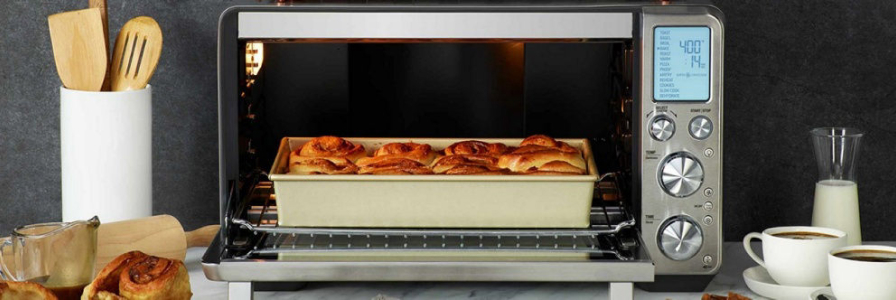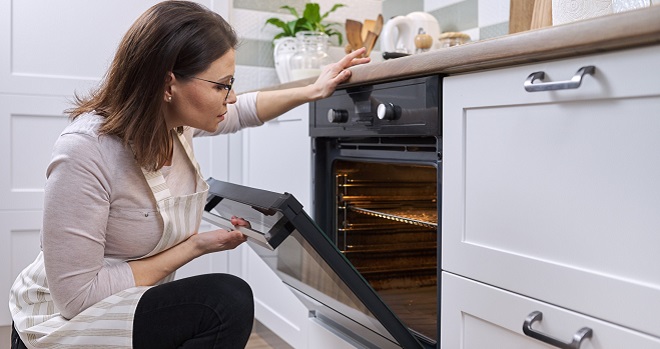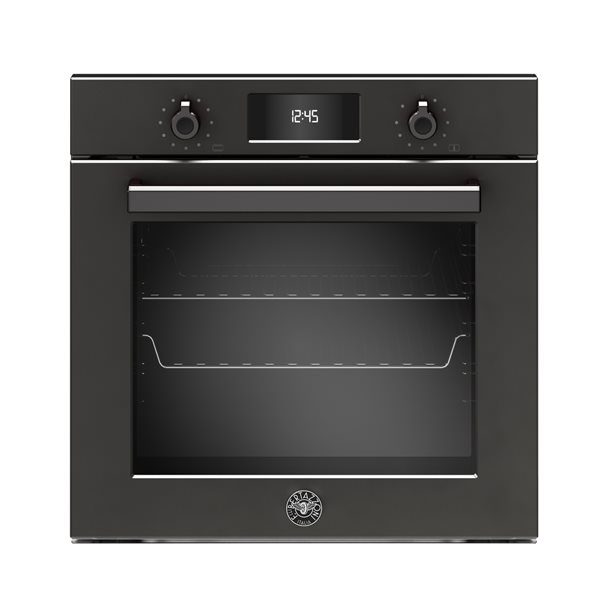How does the Oven Work?
Understanding how an oven functions can help you identify potential issues and take better care of your appliance. Ovens work by generating heat through either gas or electricity and distributing it evenly throughout the cooking chamber. The heat is regulated by a thermostat that maintains the desired temperature. This allows you to bake, roast, and broil your favorite dishes with precision and efficiency.
The Basics of Oven Operation
Ovens, whether powered by gas or electricity, operate on a fundamental principle of heat generation and distribution. The process begins with a power source that supplies the necessary energy for heating. Let’s explore the key components and mechanisms involved in the operation of an oven:
Heat Generation:
- Gas Ovens: In a gas oven, the heat is generated by a gas burner located at the bottom of the oven compartment. When the oven is turned on, the gas supply is ignited by a pilot light or an electric igniter, producing a flame. This flame serves as the primary source of heat.
- Electric Ovens: Electric ovens utilize heating elements made of metal, typically located at the top and bottom of the oven cavity. When electricity flows through these elements, they become hot, converting electrical energy into heat.
Temperature Regulation:
To achieve the desired cooking temperature, ovens rely on a thermostat. The thermostat acts as a control mechanism that senses and regulates the internal temperature of the oven. When the oven temperature drops below the set level, the thermostat triggers the heat source to generate more warmth. Conversely, when the temperature exceeds the desired range, the thermostat signals the oven to reduce or temporarily halt heat production.
Heat Distribution:
Even heat distribution is vital for consistent cooking results. Ovens employ various methods to ensure heat is evenly circulated within the cooking chamber:
- Convection: Some ovens are equipped with a convection feature that utilizes a fan and exhaust system. This fan circulates the hot air inside the oven, ensuring uniform heat distribution. Convection ovens are particularly effective at reducing cooking times and achieving better browning and crisping of food.
- Natural Convection: In ovens without a dedicated convection feature, heat naturally rises within the oven chamber. The heat then radiates and spreads throughout the cavity, though it may not be as evenly distributed as in a convection oven.

Types of Ovens
There are various types of ovens available in the market today, each with its own set of features and advantages. Let’s explore some popular types of ovens:
- Conventional Ovens
Conventional ovens are the traditional, standard ovens found in most kitchens. They use heating elements located at the top and bottom of the oven to produce heat. These ovens offer reliable performance and are suitable for a wide range of cooking needs.
- Convection Ovens
Convection ovens utilize a fan and exhaust system to circulate hot air evenly throughout the oven. This results in faster and more uniform cooking, as well as improved browning and crisping of food. Convection ovens are ideal for baking and roasting, providing excellent results.
- Self-Cleaning Ovens
Self-cleaning ovens feature a specialized cleaning cycle that eliminates the need for manual scrubbing. These ovens use high heat to burn off residue and stains, leaving you with a clean and fresh oven interior. Self-cleaning ovens offer convenience and ease of maintenance.
Significance of Regular Oven Maintenance
Regular oven maintenance is crucial to ensure optimal performance and extend the lifespan of your appliance. Here are some reasons why regular oven maintenance is significant:
- Enhanced Efficiency
Proper maintenance, such as cleaning the oven regularly and replacing worn-out parts, can enhance its energy efficiency. This, in turn, can lead to lower utility bills and reduced environmental impact.
- Prevention of Costly Repairs
By scheduling regular maintenance, you can catch minor issues before they escalate into major problems. Timely repairs and component replacements can save you from expensive repairs down the line.
- Improved Safety
Faulty ovens can pose safety hazards such as gas leaks or electrical malfunctions. Regular maintenance helps identify and address these issues, ensuring a safer cooking environment for you and your family.
- Prolonged Appliance Lifespan
When you take care of your oven through regular maintenance, it can serve you well for years to come. By preventing unnecessary wear and tear, you can prolong its lifespan and avoid premature replacements.
In conclusion, when it comes to oven repair services, our team is dedicated to providing top-quality solutions with efficiency and professionalism. We understand the significance of a well-functioning oven in your daily life, and our goal is to ensure your appliance operates at its best. Contact us today for reliable, same-day oven repair service in your area.
There are several common problems that may indicate the need for professional oven repair services

- Inconsistent Temperature: If your oven is not maintaining a consistent temperature or is heating unevenly, it can result in undercooked or overcooked meals. Our technicians can diagnose and fix issues with the heating elements, thermostat, or temperature sensors to ensure precise and accurate temperature control.
- Ignition Issues: Gas ovens may experience problems with ignition, such as a clicking sound without the burner lighting up or difficulty in getting the flame to stay lit. These issues can be caused by faulty igniters, gas valves, or ignition switches. Our experts can identify the source of the problem and restore proper ignition functionality.
- Malfunctioning Controls: If the buttons, dials, or touchpad on your oven are not responding or are working erratically, it can make it challenging to set the desired temperature or control other functions. Our technicians can troubleshoot and repair control panel issues to ensure smooth operation and ease of use.
- Faulty Heating Elements: If your oven is not heating at all or is taking an unusually long time to reach the desired temperature, it may indicate a problem with the heating elements. Our professionals can inspect and replace faulty elements to restore efficient heating performance.
- Strange Noises or Odors: Unusual noises or strange odors coming from your oven can be signs of underlying issues. It could be a worn-out fan motor, loose components, or gas leaks. Our trained technicians can identify the cause of these problems and provide the necessary repairs to ensure safety and optimal functionality.
- Door Issues: Problems with the oven door, such as it not closing properly, not sealing tightly, or difficulty in opening and closing, can impact cooking efficiency and safety. Our experts can address door alignment, hinges, gaskets, or latch issues to ensure a secure and functional oven door.
Attempting to troubleshoot and repair these problems on your own can be risky and may cause further damage. It’s best to rely on the expertise of our professional technicians who have the knowledge, tools, and experience to diagnose and fix oven issues accurately and efficiently.
Contact our team of experts to schedule an oven repair service and enjoy the benefits of a fully functional and reliable appliance in your kitchen.










